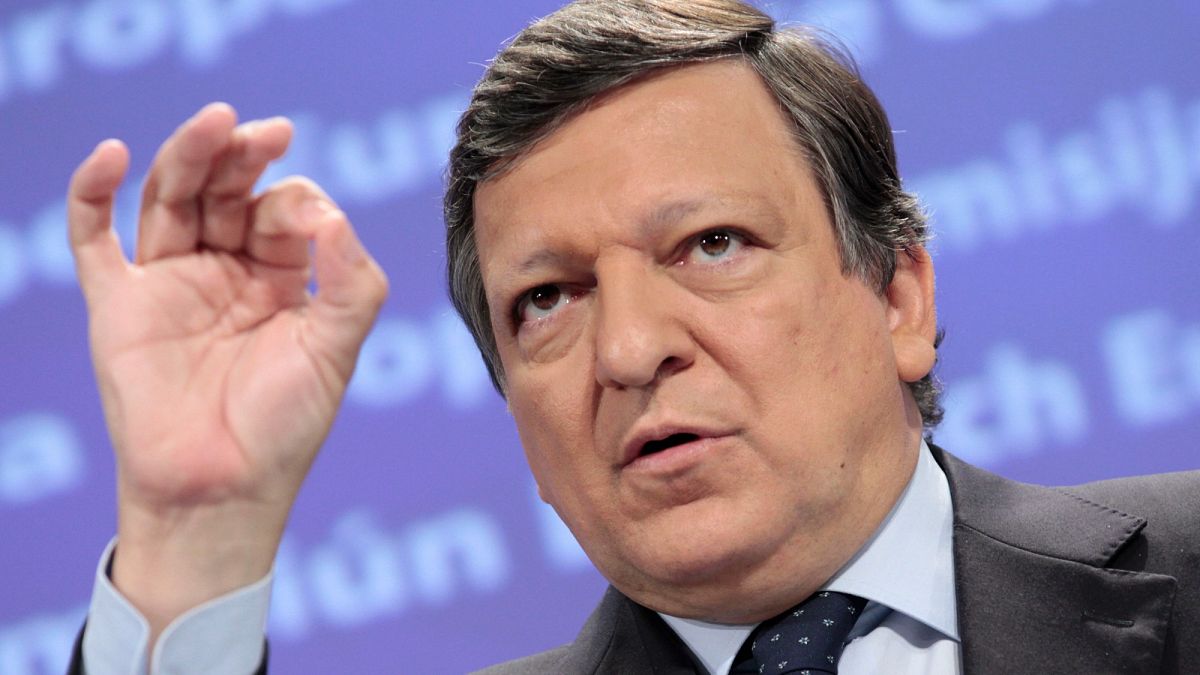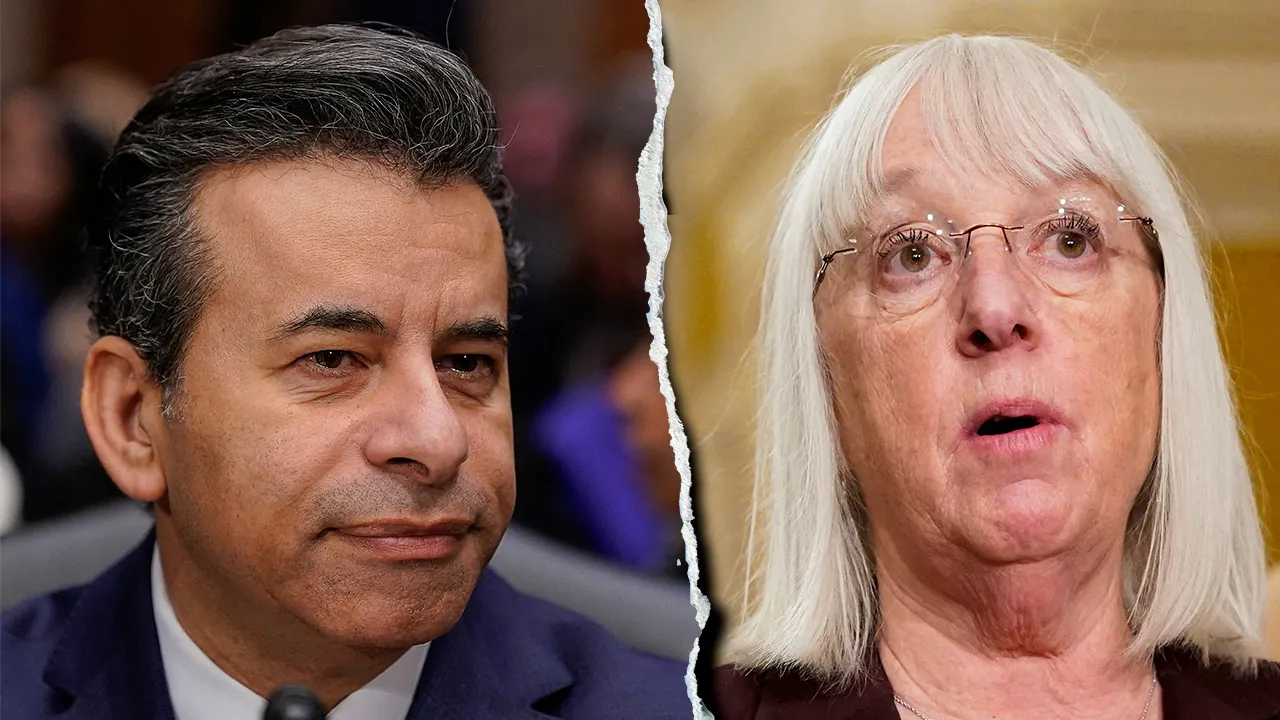Business
Column: How profit-driven turmoil at Turner Classic Movies placed a vast cultural heritage at risk

It wasn’t that long ago that the cause of film preservation and film history seemed to be on a roll. Multiple cable channels such as American Movie Classics, Bravo and Encore were devoted to classic films from the 1930s through the 1980s. When streaming supplanted scheduled cable programming, FilmStruck offered viewers a huge library of classics from the libraries of Warner Bros. and other studios.
Through it all Turner Classic Movies, or TCM, was the much-admired king. The channel was founded in 1994 by entrepreneur Ted Turner to show the library of MGM classic films he had acquired. It evolved to not only screen classic films but also curate its offerings, providing historical commentaries and interviews presented by knowledgeable hosts.
All those other services have either disappeared or been repurposed away from classic films. Until a couple of weeks ago, TCM appeared to be one of the sole survivors in the classic movie landscape.
Ten years ago, I felt that we were in kind of a golden age of appreciation of film classics and appreciation. … Now it seems to be falling apart.
— Bruce Goldstein, Film Forum
But on June 20, David Zaslav, chief executive of TCM’s new owner, Warner Bros. Discovery, swung the ax. Layoffs wiped out the network’s entire top management, including some figures who had been its leaders for decades. TCM was placed under the supervision of an executive whose other responsibilities included the Adult Swim channel and Cartoon Network.
The sense of dismay and betrayal that swept across Hollywood was almost indescribable. Film stars and character actors known to millions of fans took to social media to condemn the move. Film directors Steven Spielberg, Paul Thomas Anderson and Martin Scorsese reached out to Zaslav to urge him to back off, advice he seems to have taken, partially.
The turmoil at TCM points to more than a single company’s effort to squeeze as much profit as possible from a single asset. It reflects the impulse by the corporate stewards of America’s immense film history to view that culture strictly in commercial terms.
“Whether Mr. Zaslav planned to or not, he has inherited an American cultural treasure that he is responsible for safeguarding,” film historian Alan K. Rode, a director of the Film Noir Foundation, told me. “But he’s also trying to run a business that’s over $40 billion in debt. I don’t know how you square that circle.”
This is not a new conundrum. Almost all artifacts of film history are squirreled away in studios’ vaults, where they’ve been subject to the vicissitudes of corporate accounting and the ebb and flow of mergers and acquisitions.
Occasionally, when they’re encouraged by cultural fashions or the appearance of new technologies, the studios have burrowed into their film libraries to assess their marketability and try to untangle ownership rights.
Some 700 historic Paramount Studios productions, for example, are assumed to be nestled in the vaults of Universal Pictures, which inherited Paramount’s 1930s and 1940s film archive from its forebear MCA, which acquired the collection in 1958. (Universal was later absorbed by NBC and is now a division of the entertainment conglomerate Comcast.)
The studios don’t repurpose their libraries wholesale. Converting old films to digital formats to be screened online or on cable, or shown in theaters equipped with digital projectors, is an expensive and complicated process. Only films thought to have commercial potential get the favored treatment. Most of the others remain largely inaccessible to the public.
Warner Bros., now absorbed into Warner Bros. Discovery, was long considered the best steward of its cultural hoard. Its Warner Archives division was the industry gold standard in the care and marketing of the past. Under division head George Feltenstein, now the Warner library historian, Warner put thousands of titles, including TV series, on sale as made-to-order DVDs and established a subscription video streaming service that has since been incorporated into the company’s Max streaming service.
Choosing which films to market as DVDs or Blu-ray discs was sometimes an easy call, sometimes a challenge, Feltenstein told me in 2015. “There always will be a place on the retail shelf for ‘Casablanca,’ ‘King Kong’ or ‘Citizen Kane,’” he said. But others required finer judgments or innovative marketing. Warner Bros. still offers DVDs and Blu-rays from its classic and contemporary libraries for sale.
Classic-film cable and streaming services have tended to have short half-lives. Consider the fate of FilmStruck, which launched as the subscription-based streaming arm of Turner Classic Movies in November 2016 with an inventory of 500 films, including 200 from the classic movie library of the Criterion Collection. FilmStruck quickly became what Esquire termed “the new go-to movie destination for serious movie buffs.”
Two years later, FilmStruck was dead, slain by Warner Bros.’ new owner, AT&T, which couldn’t wait for the service to grow beyond its base of 100,000 subscribers and reach profitability. For AT&T, as I wrote then, “mass subscribership and profits are the ballgame,” patience be damned.
Other networks that had been founded to cultivate an audience of film fans suffered a similar fate. American Movie Classics was founded in 1984 as a premium cable channel to air classic films uncut and commercial-free. It even sponsored an annual film festival to raise money for film preservation. In 2002 it was rebranded as AMC and refocused on prestige TV. AMC produced “Breaking Bad” and “Mad Men,” among other series — good TV, certainly, but not classic films.
AMC’s sister channel, Bravo, was launched in 1980 to present classic foreign and independent films. After NBC bought it in 2002, it was turned into a showcase for reality series.
Yet audience interest in classic movies and film history continued to grow. “Ten years ago, I felt that we were in kind of a golden age of appreciation of film classics and appreciation, and TCM was a huge part of that,” says Bruce Goldstein, the founding repertory artistic director of Film Forum, a New York repertory house. “Now it seems to be falling apart.”
TCM and the Criterion Channel remain the go-to streaming destinations for classics. Netflix, Amazon Prime and other networks have minimal classic libraries and no learned curation.
On the surface, there is no great mystery about why Warner Bros. Discovery and Zaslav might want to draw in their financial horns a bit. The company is laboring under a crippling debt load of more than $49 billion, most of it resulting from the 2022 merger that brought together the cable programming company Discovery and the WarnerMedia division of AT&T, itself the product of AT&T’s 2016 takeover of Time Warner.
Given the combined companies’ loss of $7.4 billion on revenue of $33.8 billion last year, plainly something had to give. The question being asked by cultural historians, cinephiles and plain ordinary film fans is why TCM had to be part of the bloodletting. It was reportedly profitable, if not hugely so, but by any measure not a significant factor on the merged company’s profit-and-loss landscape.
That low profile in corporate terms could be TCM’s salvation. As my colleague Stephen Battaglio reported, an outcry in the film industry, including by Spielberg, Anderson and Scorsese, has prompted Zaslav to reassess the bludgeoning he visited upon TCM.
The network’s longtime programming chief, Charles Tabesh, who had been fired, will stay on, TCM says. Spielberg, Anderson and Scorsese will have a voice on TCM’s curation and scheduling. TCM’s classic film festival, held annually in Hollywood, will continue. In a move aimed at quelling outrage in the industry, the network will report directly to Warner Bros. Pictures Group co-heads Michael De Luca and Pamela Abdy.
Those developments generated an optimistic joint statement from Spielberg, Anderson and Scorsese: “We have already begun working on ideas with Mike and Pam, both true film enthusiasts who share a passion and reverence for classic cinema that is the hallmark of the TCM community,” the directors said.
It’s impossible to overstate the reverence that film historians and preservationists, and fans, have felt for TCM.
“They are the keepers of the flame,” says Foster Hirsch, a professor of film at Brooklyn College and member of the Film Noir Foundation board. “They’re an enormous resource for scholars and writers and fans of all ages. To start tampering with the brand or to view it in terms of marketing and data exclusively is horrifying. It’s an assault on our common culture.”
Among TCM’s virtues is its eclectic approach. “They didn’t show only well-known masterpieces,” Hirsch says. “They showed obscure films, some which aren’t good, they showed films for almost all tastes, different genres. From an artistic or historical point of view it isn’t broken. There was no reason to ‘fix’ it.”
The network has also been an almost unique portal introducing new generations to film culture. “It’s been an essential part of people’s film education, especially people of my generation,” says Jon Dieringer, 37, founder of Screen Slate, a film culture website. “I grew up watching Turner Classic Movies.”
Yet how assiduously Warner Bros. Discovery will follow through on its stated commitment to TCM’s mission remains open to question, as does whether the network can retain its stature in the cinephile community. The confidence that the network’s fans had in its staff and hosts and their ability to provide a curated approach to film history has been deeply shaken.
Many in the film community are hoping that TCM may have suffered nothing more serious than a near-death experience. Whether that’s so won’t be known for some time. Everyone will be watching, but experience suggests that when public companies pledge to treat the cultural assets under their control as more than generators of cash and profits, it’s wise to expect the worst.

Business
Help! I Couldn’t Take My Tall-Ship Voyage, and I Want My Money Back.

Dear Tripped Up,
Last summer, I booked a five-day sailing trip with Tall Ship Experience, a company based in Spain. For 1,350 euros, or $1,450, I would be a volunteer on the crew of the Atlantis, sailing between two ports in Italy. But eight days before, I had a bad fall that resulted in multiple injuries, including eight stitches to my face that doctors said I could not expose to sun or water. The Tall Ship Experience website clearly states that I could cancel for a full refund up to seven days before the trip. But the company revealed it was just an intermediary and the Dutch organization actually running the trip, Tallship Company, had different rules, under which I was refunded 10 percent. I offered to take credit for a future trip, to no avail. Finally, I disputed the charges with my credit card issuer, American Express. But Tall Ship Experience provided a completely different set of terms to Amex, saying I canceled one day in advance. The charges were reinstated. Can you help? Martha, Los Angeles
Dear Martha,
This story reads like a greatest-hits playlist of travel industry traps: a middleman shirking responsibility, terms and conditions run amok, a credit card chargeback gone wrong, and the maddening barriers to pursuing justice against a foreign company. However, the documentation you sent was so complete and the company’s website so confusing that I was sure Tall Ship Experience would quickly refund you.
Tallship Company did not respond to requests for comments, but did nothing wrong. It simply followed its own terms and conditions that Tall Ship Experience, as a middleman, should have made clear to you. When you canceled, Tallship Company sent back a 10 percent refund to Tall Ship Experience to then send to you.
That’s why I was surprised that the stubborn (though exceedingly polite) Tall Ship Experience spokeswoman who responded to me on behalf of the Seville-based organization argued repeatedly that although she regretted your disappointment, Tall Ship Experience was not at fault. At one point she suggested you should have purchased travel insurance, even as the company scrambled to adjust and update its website as we emailed.
Before the changes, the site contained two distinct and contradictory sets of terms and conditions: one for customers who purchased via the website’s English and French versions, and another on the Spanish version. (Confusingly, both documents were in Spanish.)
The English/French version — the one you had seen — promised customers a full refund for trips canceled more than seven days in advance. The Spanish one is vastly more complex, offering distinct cancellation terms for each ship. The Atlantis offered customers in your situation only 10 percent back.
Enter the stubborn spokeswoman: “The terms and conditions in Spanish correctly reflected the cancellation policy of the ship in the moment the client made the reservation,” she wrote via email. “We are conscious that at the time, the English version of the terms was not updated, which may have generated confusion. However, the official terms of the reservation were applied correctly.”
In other words, customers should somehow know to ignore one contract and seek out another on a different part of the site, both in a language they may not read.
But I am no expert in Spanish consumer law, so I got in touch with two people who are: Marta Valls Sierra, head of the consumer rights practice at Marimón Abogados, a law firm based in Barcelona; and Fernando Peña López, a professor at the Universidade da Coruña in A Coruña.
They examined the documentation and each concluded independently that Tall Ship Experience had violated basic Spanish consumer statutes. When I passed along their convincing points to the spokeswoman and alerted her that you were considering taking the company to Spanish small-claims court, she finally said it would refund you the remaining €1,215.
I felt a bit sheepish about exerting so much pressure on this small company — actually, an arm of the nonprofit Nao Victoria Foundation, which operates several replicas of historic ships — but the company should have taken much more care when it set up its website, Ms. Valls Sierra told me.
“If in your terms and conditions you say that up until seven days before departure you have the right to cancel,” she said in an interview, “and a consumer comes and says, ‘I want to cancel,’ you have to cancel their trip and return their money. They can’t use ‘Sorry, we forgot to put it on one web page, but we put it on another web page’ as an excuse.”
It is a principle of consumer law, she added, that confusing or contradictory contracts are interpreted in favor of the consumer.
The other troubling issue with the website is that you had no way of knowing that your trip was not operated by Tall Ship Experience. There was no such mention I could find on the website, which relies on marketing copy like this: “On board you will learn everything you need to know that will allow you to become one of our crew.”
Dr. Peña López, the law professor, wrote me in an email that “Tall Ship Experience is obligated to inform the consumer about the service it provides in an accessible and understandable manner, clearly indicating whether it is an intermediary.” He added that Tall Ship Experience “clearly” presented itself as the ship’s operator in this case.
As I mentioned, Tall Ship Experience did begin updating its site almost as soon as I got in touch, calling itself a “marketplace” for experiences and posting the correct terms and conditions (in the correct languages) on its English and French pages.
But Tall Ship Experience agreed to a refund only after I sent the company a compilation of the two experts’ legal analyses. “We are dedicated to creating experiences aboard unique boats, and not to legal matters,” came the spokeswoman’s response. “Regardless of which party is correct in this case, we would like to refund the full amount. We look forward to putting this to rest and to focus on continuing to improve customer experiences.”
You also said that American Express had let you down, by taking the company’s word over yours when you contested the charge. It is true that the document Tall Ship Experience sent to Amex (which forwarded it to you, who forwarded it to me), is wildly inaccurate, including only the terms favorable to the company and saying you canceled only one day in advance.
A spokeswoman for American Express emailed me a statement saying that the company “takes into account both the card member and the merchant perspectives.” But travelers should not mistake credit card issuers for crack investigators who will leave no stone unturned in pursuit of travel justice. A chargeback request works best when the problem is straightforward — you were charged more than you agreed to pay, or you never agreed to pay at all. Asking your card issuer to do a deep dive into terms and conditions is a much longer shot.
And as we’ve seen before (and might be seeing in this case) such chargeback requests often anger the companies involved to the point that they refuse to deal with you further.
If all else had failed, as I told you before the company gave in, you could have requested a “juicio verbal,” Spain’s version of a small-claims-court proceeding, via videoconference. It would not have been easy, said Dr. Peña López. Cases under €2,000 do not require a lawyer, but they do require you to have a Foreigner Identification Number, to fill out forms in legal Spanish (A.I. might help) and to find an interpreter to be by your side.
When I finally told you — in our 39th email! — you’d get a refund, you told me you had been “almost looking forward to a Spanish small-claims experience.” I admire your spirit, although I suspect it would have been quickly broken by bureaucratic and linguistic barriers.
If you need advice about a best-laid travel plan that went awry, send an email to TrippedUp@nytimes.com.
Follow New York Times Travel on Instagram and sign up for our Travel Dispatch newsletter to get expert tips on traveling smarter and inspiration for your next vacation. Dreaming up a future getaway or just armchair traveling? Check out our 52 Places to Go in 2025.
Business
In dizzying reversal, Trump pauses tariffs on most Mexican products

MEXICO CITY — In a dizzying turn, President Trump said Thursday that the U.S. would temporarily reverse the sweeping tariffs it imposed just days ago on most Mexican products.
In a post on Truth Social, Trump said he would delay for one month the imposition of 25% taxes on Mexican imports that fall under a free trade agreement that he negotiated during his last term.
His remarks follow comments from U.S. Commerce Secretary Howard Lutnick, who on Thursday said in a television interview that Trump was “likely” to temporarily suspend 25% tariffs on Canada and Mexico for most products and services, widening an exemption that was granted Wednesday only to vehicles.
Lutnick told CNBC that the one-month delay in the import taxes “will likely cover all USMCA-compliant goods and services,” a reference to the U.S.-Mexico-Canada trade agreement, the North America free trade pact Trump negotiated in his last term. Lutnick said around half of what the U.S. imports from Mexico and Canada would be eligible.
Lutnick said the reprieve will last only until April 2, when the Trump administration has said it will impose reciprocal tariffs on countries to match the ones they have on U.S. exports. Later, he said that if Canada and Mexico don’t do enough to stop fentanyl from entering the United States, the 25% tariffs could be reapplied in a month as well.
On Tuesday, the U.S. began placing duties of 25% on imported goods from Mexico and Canada, with a 10% rate on Canadian energy products. It also began imposing a new 10% tax on all imports from China.
Trump has said the tariffs are punishment because the three countries haven’t done enough to stop the flow of immigrants without proper documentation and drugs into the United States — and are an attempt to lure manufacturing back to the United States.
China and Canada responded forcefully, both imposing retaliatory tariffs on U.S. goods. Mexican President Claudia Sheinbaum had said that Mexico would also respond with counter tariffs, and had planned to announce them Sunday at a public rally in Mexico City’s central square.
In Canada, Prime Minister Justin Trudeau said he welcomed news that the U.S. would delay, but said Canada’s imposition of retaliatory tariffs will remain in place for now. “We will not be backing down from our response tariffs until such a time as the unjustified American tariffs [on] Canadian goods are lifted,” he said.
Trudeau told reporters that the U.S. and Canada are “actively engaged in ongoing conversations in trying to make sure these tariffs don’t overly harm” certain sectors and workers.
Business
Trump’s Cuts to Federal Work Force Push Out Young Employees

About six months ago, Alex Brunet, a recent Northwestern University graduate, moved to Washington and started a new job at the Consumer Financial Protection Bureau as an honors paralegal. It was fitting for Mr. Brunet, 23, who said he had wanted to work in public service for as long as he could remember and help “craft an economy that works better for everyone.”
But about 15 minutes before he was going to head to dinner with his girlfriend on the night before Valentine’s Day, an email landed in his inbox informing him that he would be terminated by the end of the day — making him one of many young workers who have been caught up in the Trump administration’s rapid wave of firings.
“It’s discouraging to all of us,” Mr. Brunet said. “We’ve lost, for now at least, the opportunity to do something that matters.”
Among the federal workers whose careers and lives have been upended in recent weeks are those who represent the next generation of civil servants and are now wrestling with whether they can even consider a future in public service.
The Trump administration’s moves to reduce the size of the bureaucracy have had an outsize impact on these early career workers. Many of them were probationary employees who were in their roles for less than one or two years, and were among the first to be targeted for termination. The administration also ended the Presidential Management Fellows Program, a prestigious two-year training program for recent graduates interested in civil service, and canceled entry-level job offers.
The firings of young people across the government could have a long-term effect on the ability to replenish the bureaucracy with those who have cutting-edge skills and knowledge, experts warn. Donald F. Kettl, a former dean in the School of Public Policy at the University of Maryland, says that young workers bring skills “the government needs” in fields like information technology, medicine and environmental protection.
“What I am very afraid of is that we will lose an entire generation of younger workers who are either highly trained or would have been highly trained and equipped to help the government,” Mr. Kettl said. “The implications are huge.”
The administration’s downsizing could have a lasting impact, deterring young workers from joining the ranks of the federal government for years, Mr. Kettl said.
About 34 percent of federal workers who have been in their roles for less than a year are under the age of 30, according to data from the Office of Personnel Management. The largest single category of federal workers with less than a year of service are 25- to 29-year-olds.
The federal government already has an “underlying problem” recruiting and retaining young workers, said Max Stier, the president of the Partnership for Public Service. Only about 9 percent of the 2.3 million federal workers are under the age of 30.
“They’re going after what may be easiest to get rid of rather than what is actually going to make our government more efficient,” Mr. Stier said.
Trump administration officials and the billionaire Elon Musk, whom the president has tasked with shrinking the federal government, have defended their efforts to cut the work force.
“President Trump returned to Washington with a mandate from the American people to bring about unprecedented change in our federal government to uproot waste, fraud and abuse,” Harrison Fields, a White House spokesman, said in a statement.
Mr. Trump has vowed to make large-scale reductions to the work force, swiftly pushing through drastic changes that have hit some roadblocks in court.
Last week, a federal judge determined that directives sent to agencies by the Office of Personnel Management calling for probationary employees to be terminated were illegal, and the agency has since revised its guidance. Still it is unclear how many workers could be reinstated.
The abrupt firings that have played out across the government so far came as a shock to young employees.
They described being sent curt messages about their terminations that cited claims about their performance they said were unjustified. There was a frantic scramble to download performance reviews and tax documents before they were locked out of systems. Some said they had to notify their direct supervisors themselves that they had just been fired.
On the morning of Feb. 17, Alexander Hymowitz sat down to check his email when he saw a message that arrived in his inbox at 9:45 p.m. the night before. An attached letter said that he had not yet finished his trial period and was being terminated from his position as a presidential management fellow at the Agriculture Department. It also said that the agency determined, based on his performance, that he had not demonstrated that his “further employment at the agency would be in the public interest.”
Mr. Hymowitz, 29, said he was dumbfounded. “My initial thought was, obviously something is wrong,” he said. “How could I get terminated for performance when I’ve never had a performance review?”
Mr. Hymowitz, who had worked on antitrust cases and investigations in the poultry and cattle markets for about six months, said he was not given many further instructions. The next day, he decided to walk into the office and drop off his work equipment. “I just assumed that’s what people do when they get fired,” he said.
Around 8 p.m. on Feb. 11, Nicole Cabañez, an honors attorney at the Consumer Financial Protection Bureau, found out that she had been terminated after she realized she could not log into her work laptop. Ms. Cabañez, 30, worked in the agency’s enforcement division for about four months, investigating companies that violated consumer financial laws.
“I was prepared to help make the world better,” Ms. Cabañez said. “It’s honestly very disappointing that I never got that chance.”
During her first year at Yale Law School, Ms. Cabañez said she originally planned to work at a large law firm, where she would have defended companies and made a lucrative income after graduation. But she said she wanted to work in public service to help people get relief through the legal system.
Ms. Cabañez said she was now applying for jobs with nonprofits, public interest law firms and local governments. But she said she worried that the job market, especially in Washington, would be “flooded with public servants.” She said she could not file for unemployment benefits for three weeks because her agency had not sent her all of the necessary documents until recently.
The impacts have stretched beyond Washington, reaching federal workers across the country, including in Republican-led states.
At 3:55 p.m. on Feb. 13, Ashlyn Naylor, a permanent seasonal technician for the U.S. Forest Service in Chatsworth, Ga., received a call from one of her supervisors who informed her that she would be fired after working there for about nine months. Ms. Naylor said she initially wanted to stay at the agency for the rest of her career.
“It was where I have wanted to be for so long, and it was everything that I expected it to be from Day 1,” Ms. Naylor said.
Ms. Naylor, 24, said she felt a mixture of anger and disbelief. She said her performance evaluations showed she was an “excellent worker,” and she did not understand why she was fired. Although she said she was devastated to lose her job, which primarily involved clearing walking trails in the Chattahoochee-Oconee National Forest, she was not sure if she would return to the agency in the future.
“It would be really hard to trust the federal government if I were to go back,” Ms. Naylor said. She said she was considering enrolling in trade school and possibly becoming a welder since she is still “young enough” to easily change her career.
Although some said their experiences have discouraged them from pursuing jobs with the federal government again, some said they were intent on returning.
Jesus Murillo, 27, was fired on Valentine’s Day after about a year and a half working as a presidential management fellow at the Department of Housing and Urban Development, where he helped manage billions of dollars in economic development grants. After standing in countless food bank lines and working in fields picking walnuts to help his family earn additional income growing up, Mr. Murillo said he wanted to work in public service to aid the lowest income earners.
“I’ve put so much into this because I want to be a public leader to now figure out that my government tells me that my job is useless,” Mr. Murillo said. “I think that was just a smack in the face.”
Still, he said he would work for the federal government again.
“For us, it’s not a partisan thing,” Mr. Murillo said. “We’re there to carry out the mission, which is to be of service to the American public.”
-

 Sports1 week ago
Sports1 week agoNHL trade board 7.0: The 4 Nations break is over, and things are about to get real
-

 News1 week ago
News1 week agoJustice Dept. Takes Broad View of Trump’s Jan. 6 Pardons
-

 World1 week ago
World1 week agoHamas says deal reached with Israel to release more than 600 Palestinians
-

 Science1 week ago
Science1 week agoKilling 166 million birds hasn’t helped poultry farmers stop H5N1. Is there a better way?
-

 News1 week ago
News1 week agoChristianity’s Decline in U.S. Appears to Have Halted, Major Study Shows
-

 World1 week ago
World1 week agoGermany's Merz ‘resolute and determined,' former EU chief Barroso says
-

 Technology1 week ago
Technology1 week agoMicrosoft makes Copilot Voice and Think Deeper free with unlimited use
-

 Politics1 week ago
Politics1 week agoSome Republicans Sharply Criticize Trump’s Embrace of Russia at the U.N.















